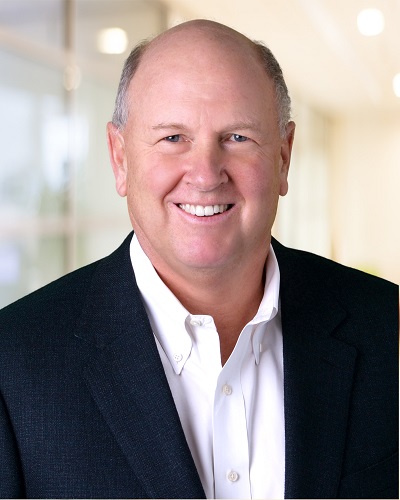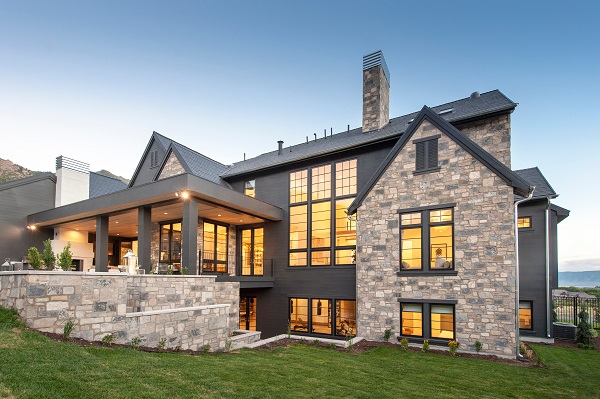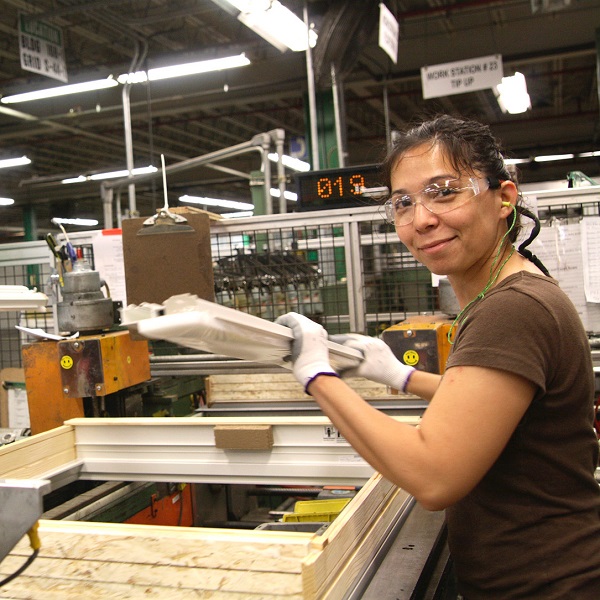A Transformational Career
Jay Lund reflects on a nearly 40-year career with Andersen as he retires as CEO

The cyclical nature of the building products industry requires companies to constantly re-evaluate and reinvent themselves to keep afloat, take advantage of booms, and be prepared to weather the difficult seasons. Jay Lund, former Andersen Corp. CEO and current board chair, retired from Andersen at the end of 2022 and took time to discuss his career and the challenges and successes he saw during his tenure.
Economic ups and downs
Lund has weathered several economic expansions and recessions throughout his career, starting with the 1980s recession, the 1990s boom and the tumultuous 2000s, including the Great Recession and COVID-19 pandemic.
Difficult times can also be learning times. “We learned a lot of valuable lessons about how to fortify the business through those difficult times,” explains Lund. “We took a lot of extreme measures to protect the company during the Great Recession. It was a very painful period for our company and everyone in the industry. One of the things we were very clear about is we're going to do this all together; that's our culture. We're going to share in the sacrifices just as we share in the success and good times. Everyone needs to contribute, and we'll stay on the offense and continue to invest in those things we believe will fuel the growth of the business.”
Lund shares the company had three big investment considerations during that time: Renewal by Andersen, which Lund describes as a nascent business at the time, but with a lot of opportunity; the 100 series product, a Fibrex-based product sold under the Andersen brand; and the E-series offering, which was a new line of products for the high-end market. Those three business elements evolved into the company’s primary growth drivers in the past decade, says Lund, illustrating the importance of continuous innovation and investment during difficult times. “It would've been easy to have curtailed those investments or put them back on the shelf for a while. We would've been a very different company today if we had chosen that path.”
The 2020 pandemic rocked the housing market and economic landscape, but the main challenge for Andersen revolved around safety. “The housing market was one of the beneficiaries as people used their homes differently and hunkered down,” he says. “But it was more challenging overall because we were dealing with a public health crisis and our priority was to protect the safety of our employees and contribute to our nation's efforts to slow the spread of the virus.”
Manufacturing evolutions
Not only did Lund experience a rollercoaster of business conditions, but he also helped navigate continuous improvement in manufacturing techniques, which included investing in the correct type and amount of automation and software—something he describes as critical to enabling manufacturers to continue delivering their products. “It’s fascinating and a critical enabler for the future of our industry.”
Andersen had to evolve its manufacturing “from being mass production to mass customization and made-to-stock to made-to-order,” in addition to making the business scalable and making manufacturing a precision process. “You can’t do that with high-quality labor alone,” he says. “You have to assist labor with technology and automation.
“Many years ago, you could go into any window manufacturer and say we all do it the same,” he continues. “Our belief was if we're going to truly be an industry leader and world-class manufacturer, we have to take a different path. It's going to take a different capital model because investing in all that automation is hugely capital-intensive. Automation is a very complex thing and is a really important differentiator in the performance and quality, cost, and scalability of the products you're manufacturing.”
Investments and redirections

Lund joined Andersen in the early 1980s following a recession where mortgage rates climbed to nearly 19 percent. He remembers that era as “a time of explosive growth for the company.” Andersen had one location in Bayport, Minnesota, at the time and brought in a few hundred million dollars per year. Innovations such as its PermaShield technology, investments in a consumer brand and a two-step distribution system all enabled a period of strong growth, he recalls. Windows, however, evolved into made-to-order products and Lund says Andersen was slow to adapt to that shift and the company felt some “fairly significant” headwinds.
Don Garofalo led the company in the 1990s and recognized that Andersen had to reinvent itself to continue to flourish. “He declared that as a time of reinvention,” recalls Lund. Thus began a strategic plan with a set of strategies and a roadmap to revitalize the company. “Those were the basic building blocks we followed in terms of all the work we've done to reinvent the business and ignite the next wave of growth for the company,” he says.
Andersen continues to invest in its businesses, products, employees, manufacturing and more. Recently, it branched out into other opportunities. Andersen invested in Ubiquitous Energy, a transparent photovoltaic technology company, about a year ago and announced an agreement to jointly develop energy-generating window and door products.
Lund explains Andersen formed a corporate ventures capital group because there are some things they can do organically—some through mergers and acquisitions, some through joint ventures, and yet others through investments in entrepreneurial companies on what Lund describes as “the cusp of what we believe are transformational game-changing types of technology.” As an investor and strategic partner, he says, there’s an opportunity to benefit if the technology succeeds and to use it as a key differentiator.
Differentiation and innovation are particularly relevant as it relates to sustainability as standards become more stringent and energy costs continue to rise. “We believe long-term that through the technologies that exist, there's going to be a diminishing return in terms of the incremental gains you can make in energy efficiency, whether it be triple-pane technology, vacuum-formed glass, or robust window and door designs. Not that there isn't room—and we continue to invest in that—but the disruptor is when windows and doors can be used to harvest energy and not just be more energy efficient.
People culture

Lund attributes his career at Andersen to shaping him as a person. “When I was young, there was an expectation we'd get involved in communities,” he says. Lund recounts his involvement with a Chamber of Commerce and chairing a community-wide celebration. A “second full-time job,” he defines it as a terrific opportunity to meet community leaders through fundraising and organizational efforts. Attending the event also lent a sense of pride in playing an integral role in its success. “The lessons learned is it’s personally rewarding to be working in the community and making a difference in the lives of others.”
That sentiment carries through to Andersen’s entire leadership team. “Every one of the leaders on our executive team sits on at least one nonprofit,” says Lund. “Our belief is you don't just sit on a board to sit on a board. You go in there, you roll up your sleeves and you make a meaningful difference. I can't tell you how proud I am of our team and all the different things they do to make a difference in the community.”
The “all-together” spirit harkens back to Andersen’s founding, says Lund. “We're all one team. We work hard every day. We all share in the hard work and share in the success.”
Andersen shares in its success with profit-sharing and supporting the communities in which the employees live and work. Lund cites two examples: the Fred C. and Katherine B. Andersen Foundation—which has become one of the largest foundations in Minnesota—and the recently established employee assistance fund through the Minneapolis Foundation, which helps Andersen to support its employees through hard times.
Employees also actively engage in their communities. “We've tried to instill this culture of giving back to communities. In many ways, that's part of the broader commitment we have to good stewardship—whether it’s being a good environmental steward, being an industry leader or making a difference in the community,” he says.
Lasting impact
“One of the things I am most proud of as I look back is the ‘all-together’ spirit of our team—all we've accomplished in building and transforming this business, all that we've endured along the way, and the resiliency to get through, come out stronger and seize them as an opportunity—not just survive them,” says Lund.
“Back in the ‘90s when we launched that strategic plan, the business was heading in the wrong direction. It needed to be revitalized and I've devoted the last 25 years to leading those change initiatives that were so important to the future of the company,” he says. “To sit here today and look at how far we've come, how the business has flourished and all the work that went into it by these amazing people is something I will always be grateful for and very proud of. It's just been an amazing success story.”
Andersen continues its quest to become a “world-class customer experience company,” says Lund. This will necessitate the proper process, systems, technology and a culture in which the people have pride and passion for what they do. “We're all marching down the same path together and everybody understands that their first and highest priority is to find a way to take care of that customer,” he says.
Lund also speaks to the importance of diversity and how it relates to the “all-together” spirit. “We have to become more diverse because that's the world we live in. It's the customers we serve, it's the workforce that we're trying to attract, and you can't be diverse unless you're also equitable and inclusive in terms of creating a welcoming culture that allows every employee to have the opportunity to reach their full potential.”
Chris Galvin is Andersen’s new president and CEO. “I'm very excited for Chris and the team. He is an exceptional leader,” says Lund. “We've worked together for about 20 years. It’s very clear that he has what it takes. He's surrounded by a wonderful values-based and exceptionally capable leadership team. The future looks great for Andersen with Chris at the helm.” Lund will continue to serve as chairman of the board to support and guide a successful, smooth transition.
“I fell in love with this industry. Not just the window and door industry, but the housing and building material industries. It's a fantastic place to make a career,” Lund reflects. “As consumers, there's nothing we care about more than our homes. There's nothing we have more of a passion for than our homes. We have an opportunity to help people realize their dreams and that's a pretty fun business to be in.”
